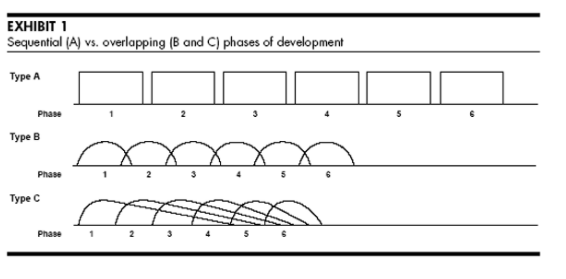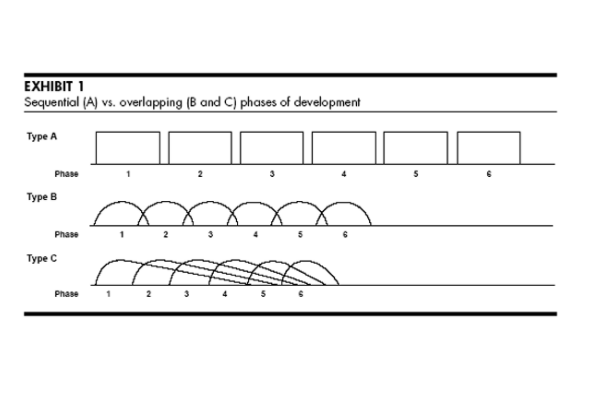This week’s blog post is based on a chapter from our book, Scrum 101: the most frequently asked questions about Agile with Scrum, which is available to buy for $12.60.
The ‘rugby approach’ was first described by Hirotaka Takeuchi and Ikujiro Nonaka in a Harvard Business Review article in 1986 titled ‘The New New Product Development Game‘. Having observed teams at companies like Honda, 3M, Epson and Canon, they pulled together what they considered key attributes of successful teams working on new products. “Like a rugby team”, they wrote, “the core project members at Honda stay intact from beginning to end and are responsible for combining all of the phases.” We assume they a differentiating from American Football which swaps over teams depending on the phase of play.
They exclaimed that “Companies are increasingly realising that the old, sequential approach to developing new products simply won’t get the job done. Instead, companies in Japan and the United States are using a holistic method- as in rugby, the ball gets passed within the team as it moves as a unit up the field.”
There was only one mention of Scrum in this article. It was the title of a paragraph (“Moving the Scrum Downfield”) which outlined six characteristics for managing new product development. These characteristics were:
- Built-in instability (e.g. encouraging “trial and error by purposely keeping goals broad and by tolerating ambiguity”)
- Self-Organizing project teams
- Overlapping development phases
- Multilearning (e.g. learning as individuals, as teams, as an organisation. Also “accumulating experience in areas other than your own”)
- Subtle control (e.g. giving the team autonomy, but avoiding chaos by acts such as selecting the right people for the project, creating an open environment, encouraging teams to listen to users, tolerating mistakes)
- Organizational transfer of learning (e.g. sharing wisdom and “converting project activities to standard practice”)
Takeuchi and Nonaka went on to write ‘The Knowledge-Creating Company: How Japanese Companies Create the Dynamics of Innovation‘
(1995) but they just expanded on their rugby-like ideas rather than Scrum.
In 1995, Ken Schwaber delivered a paper at OOPSLA, in Texas, entitled ‘SCRUM Development Process’. This references Takeuchi and Nonaka’s earlier work, but is seen as the basis of Scrum as we know it today.

